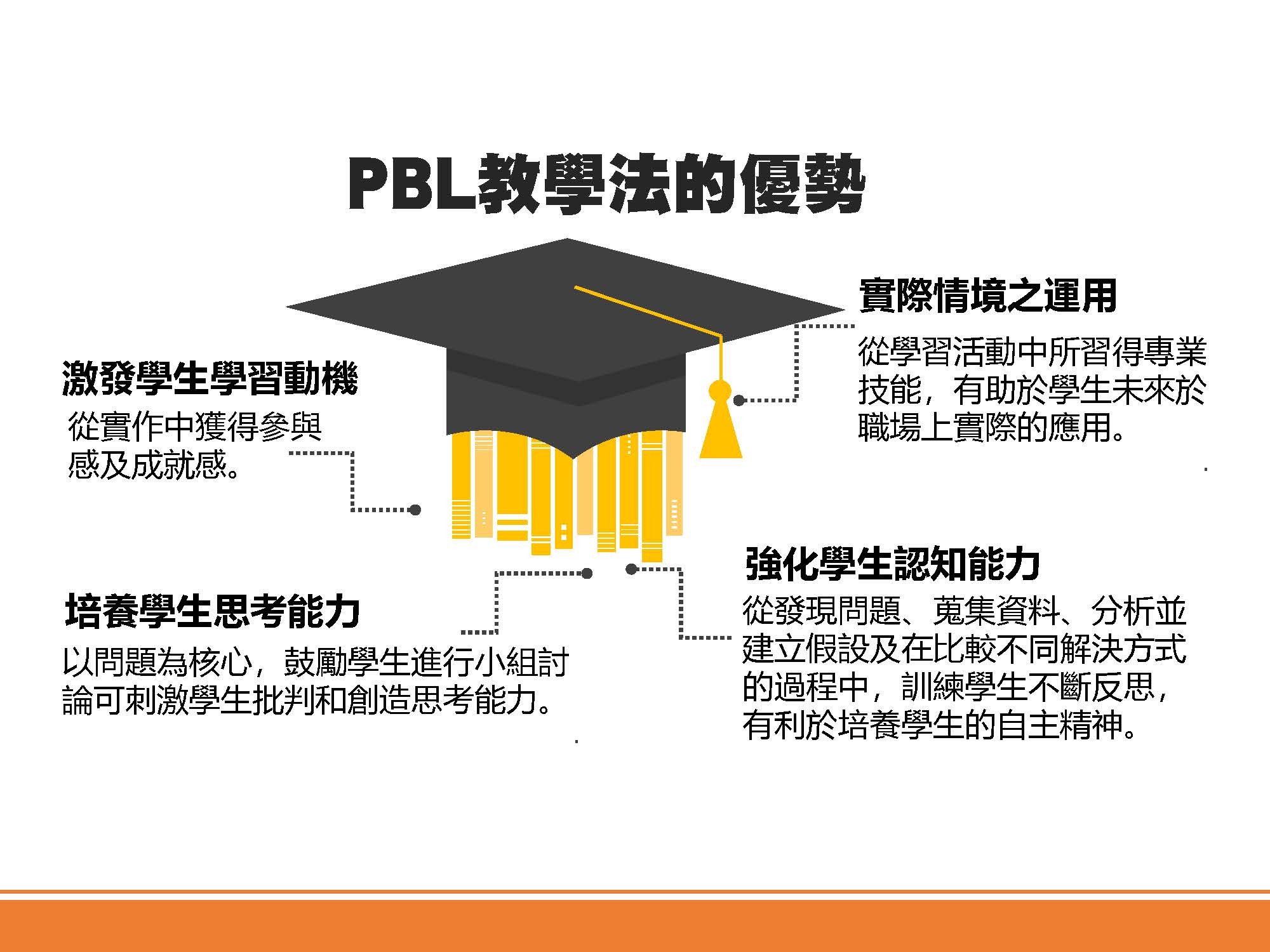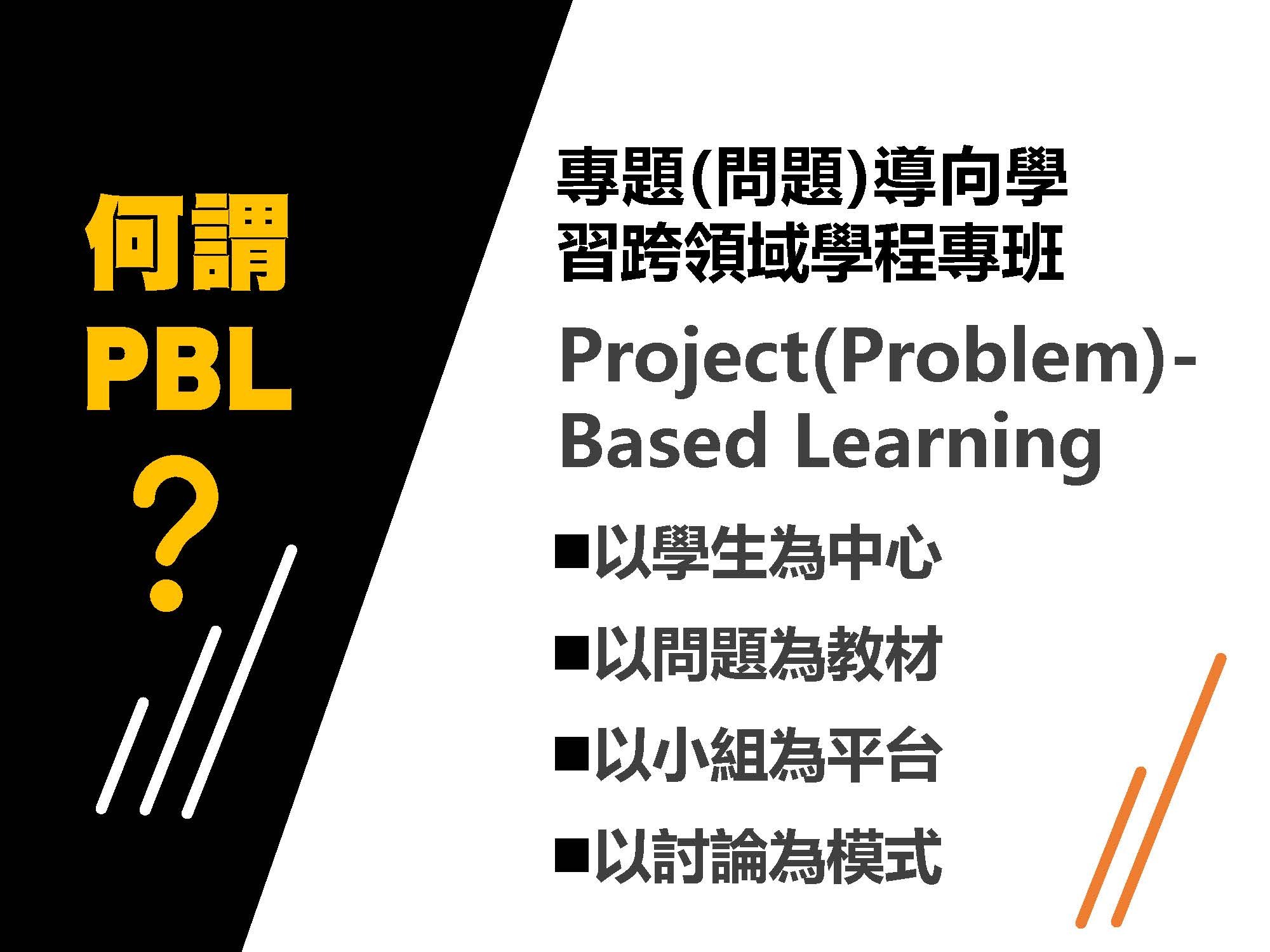Introduction
Purpose of the Program
The purpose of this program is to cultivate students' cross-disciplinary skills and problem-solving abilities, with the aim of connecting them with the industry. To achieve this, the university has established the "Problem-Solving-Oriented Cross-Disciplinary Program." The problem-solving-oriented learning approach is learner-centered and focuses on solving practical problems, which stimulates student learning. This approach integrates diverse cross-domain knowledge for exploration. The teaching goals and problems are jointly determined by the industry, teachers, and students, and based on these, students are organized into project teams. Through the structure of the project teams, students will develop problem-solving skills, enhance their self-directed learning motivation, and engage in knowledge construction, sharing, and integration to address the targeted problems.

▲The advantages of the PBL (Problem-Based Learning) teaching method are: stimulating students' motivation to learn, applying knowledge in real-life contexts, fostering critical thinking skills, and strengthening students' cognitive abilities.

▲What is PBL? PBL (Problem-Based Learning) is a student-centered, problem-driven educational approach where problems serve as the learning material. It is structured around small group collaboration, with discussion as the primary learning mode. In the context of a cross-disciplinary program, PBL focuses on solving real-world problems, encouraging students to explore and integrate knowledge from multiple disciplines to find solutions. The approach promotes active learning, critical thinking, and problem-solving skills, with students working together in teams to tackle complex issues.
